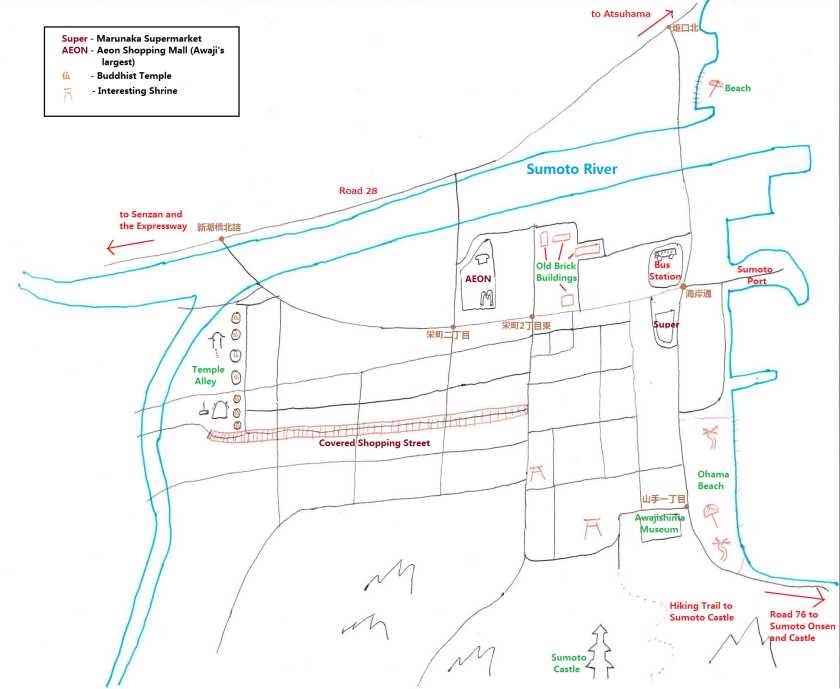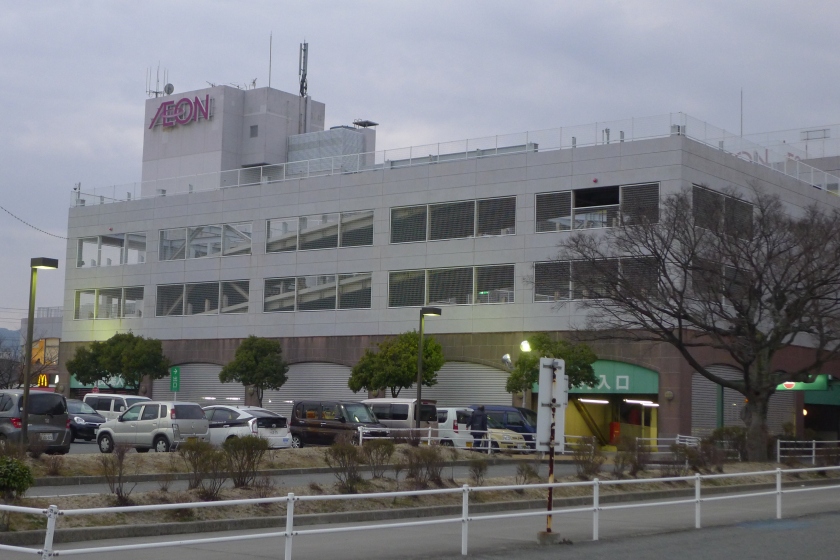洲本

ABOUT
Sumoto is Awaji’s largest town. It lies in a little valley by the sea, with the heavily altered Sumoto River flowing through it. Just to the south of Sumoto, the town’s castle sits on a high hill, while more hills protect the town from the north. To the east is the Bay of Osaka, and one of Awaji’s best beaches.
Sumoto’s castle was largely expanded in the early 17th century, by a regent acting on behalf of the Tokushima Han to whom Awaji belonged. There are some remnants of the old castle town in the temples and shrines of Sumoto’s center. In the Meiji period, a huge factory (mostly producing cotton) was set up in central Sumoto, and the town’s river rerouted in order to accommodate it. A few brick buildings still survive, but much of the area has been turned into shops, offices, and a hospital.
Sumoto is certainly not somewhere you’d go looking for nightlife, but it’s the one place on Awaji where you won’t struggle to find an izakaya. With a nice beach, an interesting little castle, and good facilities, it’s not a bad place to base yourself during your Awaji adventures.

ATTRACTIONS
Rising above Sumoto is the town’s Castle, offering preserved stone fortifications and fine views. The lazy can drive up around the back of the castle from Sumoto Onsen, but it’s more pleasant to hike up from town. Hiking trails through the forest are easy to find; it should take you about 30 minutes from Ohama Beach.
This beach sits right in the heart of town, and is perhaps the island’s most popular. It’s a pleasant strip of sand, with good swimming, but it gets packed on summer weekends.
Next to the beach is the Awajishima Museum, Awaji’s main museum, covering the island’s history and culture. It’s a worthwhile diversion on a rainy day, or for those looking to learn more about the island’s history and more obscure temples and historic sites.
Heading inland, and very close to the bus station are Sumoto’s Brick Buildings. These are all that remain of the large factory that dominated Sumoto in the first half of the 20th century. Just beyond the buildings is the main shopping district of Sumoto, where you’ll find the Aeon shopping mall, Awaji’s largest shopping complex. Nearby, in the warren of alleys of the old castle town, is a covered shopping street, and the majority of Sumoto’s restaurants and izakaya.
Also here, you’ll find Sumoto Castle Town’s Temples and Shrines, places of worship built for the old castle town. There’s nothing particularly noteworthy here, but they’re atmospheric places to wander around for an hour or two.

TRANSPORT
Sumoto’s bus station is a major transport hub for Awaji, with over 50 buses a day heading to Maiko and/or Sannomiya. There are also buses to Osaka and Tokushima, as well as local buses heading all around Awaji:
Buses from Sumoto off of Awaji – Destinations include Maiko, Sannomiya, Osaka, Gakuentoshi, and Tokushima.
Local buses from Sumoto – Destinations include Yura, Tsuna, Higashiura, Iwaya, Minami-Awaji (including Minato), Fukura, and Goshiki.
The bus station is in the heart of town, and all the attractions mentioned on this page are within easy walking distance of it.
The main road through Sumoto is the 28, which heads north towards Tsuna and west towards Minami-Awaji. Those wanting to follow the coast south of Sumoto can take the narrow 76 to Sumoto Onsen and the village of Yura beyond.
TIPS
As Awaji’s biggest town, Sumoto is an obvious place to add to an itinerary of the island. The main draws are the castle and the beach, but a trip to Awaji’s main museum or a wander around the older part of town will also interest some. Sumoto can also be used as a base for visiting sights in the surrounding area, covered in the Sumoto Surroundings sections.
Sumoto has one of the best selections of accommodation on Awaji, particularly in the neighborhood around Ohama Beach.

